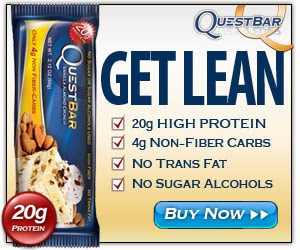I read this article about drinking 3 liters of water a day and how this woman went from the before to the after picture:
Seeing water is cheap from the tap and I found an old jug, sure why not! Well I have to say that besides the first several days of constant trips to the bathroom, my skin really did improve, my belly felt flatter and knowing I do NOT drink enough water I would recommend trying this if you know you don't drink much water. Here is this woman's story: http://www.dailymail.co.uk/femail/article-2480491/How-drinking-litres-water-day-took-years-face.html
MORE proof:
Another interesting study for consuming collagen to help fight aging - the overall opinion is out on this one. Many dermatologists disagree that consuming collagen can help with aging skin because it can't get to your skin when it is consumed but its still interesting:
Study Information:
http://www.vrp.com/bone-and-joint/bone-and-joint/collagen-type-ii-shown-to-reverse-skin-and-joint-aging
Q: Is it true that I should start the day with hot water with lemon? What’s the story behind this theory?
A:
Like most health and fitness lore, the magic properties of drinking a
juiced lemon in warm water each morning is rooted in a seed of truth,
but the impact of the ritual is greatly overstated. Let’s look at the
three main purported benefits and any evidence to support those claims.
1. Lemon improves digestion. Actually
in some cases the fruit could exacerbate issues with your stomach:
Citric acid in lemons can cause or contribute to stomach pains and
cramps. So where does the idea that drinking lemon juice improves
digestion come from? There is a study from about three decades ago that
shows citric acid can improve absorption of aluminum hydroxide (the
active ingredient in most antacids). I have read online that the acidic
nature of lemon juice is supposed to support an optimal acidic
environment in your stomach, but this is complete speculation and, as
pointed out earlier, in certain individuals could have the opposite
effect.
2. Lemon juice boosts mineral absorption.
The vitamin C found in lemon juice has been shown to enhance mineral
absorption, but you don’t need warm lemon juice to get this effect.
Vitamin C is one of the most ubiquitous vitamins in fruits and
vegetables. We often think of citrus fruits as being the major or even
only source of C, but non-yellow and orange fruits and vegetables such
as bell peppers, kale, strawberries, broccoli, and spinach all contain
robust amounts of vitamin C. As long as you are having a fruit or
vegetable with your morning meal, then you can expect to reap the
enhanced absorption of minerals at that meal.
3. Lemon detoxes.
One of the biggest health hypes about lemons and lemon juice is that
they help detoxify your body. I recommend that you get very skeptical
about any food or supplement claim regarding detoxification. It is such a
general term that it is almost useless. The human body is so complex,
what is getting detoxified? What are the toxins being removed? Where are
they going?
Regarding
lemon, there is an antioxidant in the fruit called d-limonene, which is
also found in oranges and is most highly concentrated in the peels of
lemons or oranges. D-limonene has been shown to activate enzymes in the
liver that are part of the Phase 1 and Phase 2 detoxification processes.
These processes take compounds present in the liver that are toxic to
cells and convert them to non-harmful or less harmful versions. These
“toxins” can range from caffeine to ibuprofen.
Does
lemon juice contain enough D-limonene needed to enhance this process?
Probably not. A liter of citrus juice (not made with the peels) contains
on average 100 milligrams (mg) D-limonene. Researchers estimate the
active dose of limonene is a minimum of 500mg. D-limonene is a fascinating compound that might also work to ease
gastro-esophageal reflux disease (GERD), but doses would require
supplementation.
As
you can see, as a citrus fruit, lemon has a handful of characteristics
and compounds that contribute to good health, but one lemon juiced in a
glass of warm water probably isn’t going to do much for your health.
reference article by Dr. Mike Roussell
http://www.shape.com/healthy-eating/diet-tips/ask-diet-doctor-hot-lemon-water%E2%80%99s-real-benefits#010714













